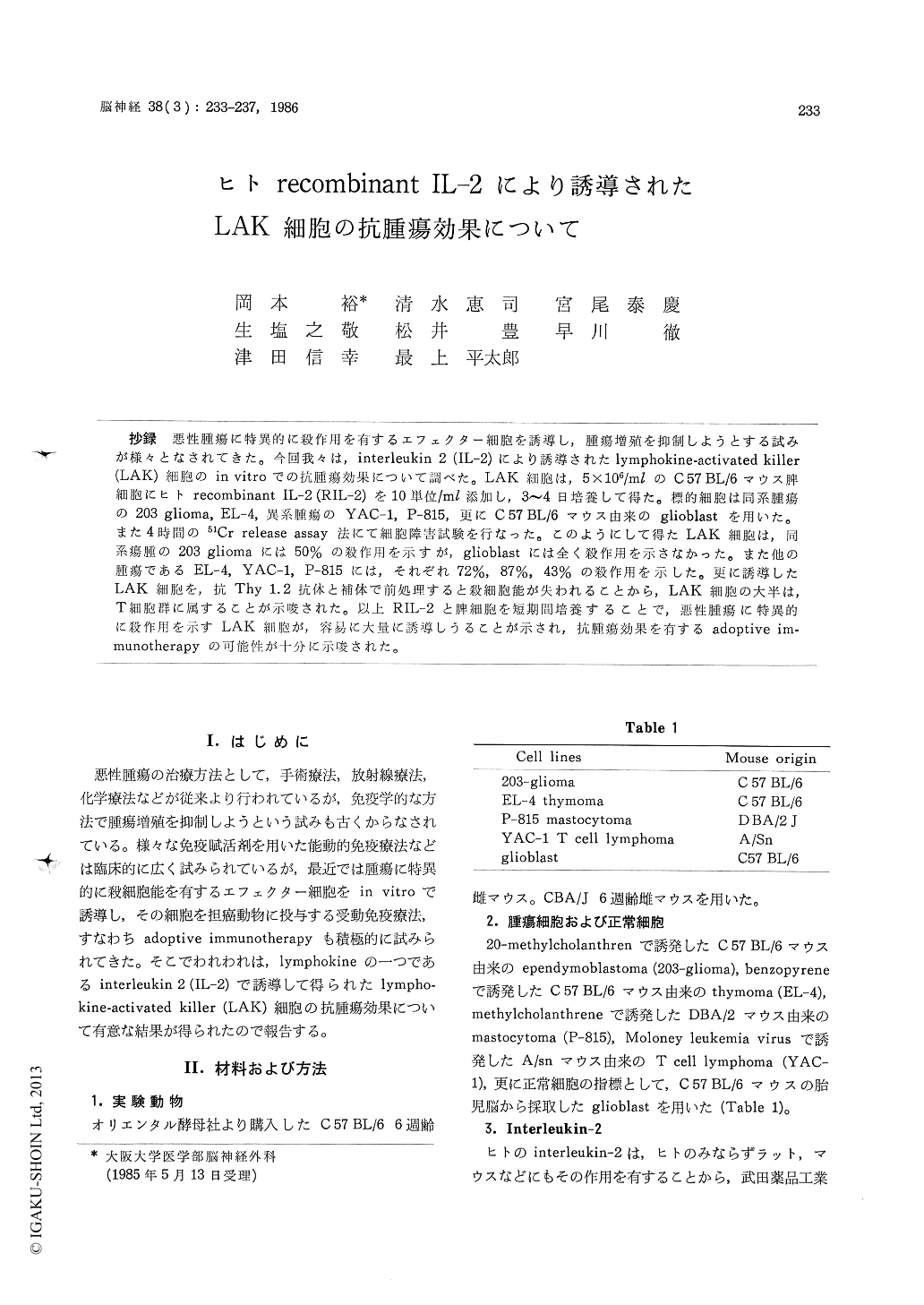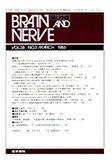Japanese
English
- 有料閲覧
- Abstract 文献概要
- 1ページ目 Look Inside
抄録 悪性腫瘍に特異的に殺作用を有するエフェクター細胞を誘導し,腫瘍増殖を抑制しようとする試みが様々となされてきた。今回我々は,interleukin 2(IL−2)により誘導されたlymphokine-activated killer(LAK)細胞のin vitroでの抗腫瘍効果について調べた。LAK細胞は,5×106/mlのC57 BL/6マウス脾細胞にヒトrecombinant IL−2(RIL−2)を10単位/ml添加し,3〜4日培養して得た。標的細胞は同系腫瘍の203glioma,EL−4,異系腫瘍のYAC−1,P−815,更にC57 BL/6マウス由来のglioblastを用いた。また4時間の51Cr release assay法にて細胞障害試験を行なった。このようにして得たLAK細胞は,同系瘍腫の203gliomaには50%の殺作用を示すが,glioblastには全く殺作用を示さなかった。また他の腫瘍であるEL−4,YAC−1,P−815には,それぞれ72%,87%,43%の殺作用を示した。更に誘導したLAK細胞を,抗Thy 1.2抗体と補体で前処理すると殺細胞能が失われることから,LAK細胞の大半は,T細胞群に属することが示唆された。以上RIL−2と脾細胞を短期間培養することで,悪性腫瘍に特異的に殺作用を示すLAK細胞が,容易に大量に誘導しうることが示され,抗腫瘍効果を有するadoptive im-munotherapyの可能性が十分に示唆された。
We have studied the in vitro antitumor effec-tiveness of murine lymphokine-activated killer (LAK) cells induced by recomainant IL-2 (rIL-2). LAK cells were generated by placing 5 × 107 fresh C 57 BL/6 splenocytes (erythrocytes were lysed osmotically) in 10-cm (diameter) dishes (Falcon) containing 10 ml of complete medium (CM). The CM consisted of RPMI 1640 with 0.1 mM non-essential amino acids, 1 μM sodium pyruvate, 5 × 10-5M 2-mercaptoethanol, 50μ gentamicin sulfate, 0.03% glutamine, 10% heat-inactivated fetal calf serum (FCS) and 10 units/m/ of rIL-2 (TGP-3, provided by TAKEDA Chemical Indust-ries, Ltd). The dishes were incubated horizontally at 37゚C in a 5% CO2 atmosphere for 72-96 hr. The LAK cells were then harvested, washed three times, and resuspended in RPMI 1640 with 5% heat-inactivated FCS for the in vitro cytotoxicity assay. The antitumor cytotoxic activity of LAK cells was estimated in triplicate by 4 hr 51Cr re-lease assays. The cytotoxic activity of LAK cells against syngeneic 203 glioma and normal synge-neic glioblasts was approximately 50% and a few %, respectively. The in vitro cytotoxicity of LAK cells against syngeneic EL-4 thymoma, allogeneic YAC-1 lymphoma and P-815 mastocytoma was 72 %, 87% and 43%, respectively. Thus LAK cells have apparent tumor specificity in vitro and are easily generated. Fresh splenocytes of CBA/J mice were markedly lytic for natural killer (NK)-sensi-tive YAC-1 cells, but not for 203-glioma cells or NK-resistant P-815 cells. This means that 203-glioma consists of NK-resistant cells, and the an-titumor effect of LAK cells is not due to NK cells. When LAK cells generated by rIL-2 were pretreated with monoclonal antithy 1.2 antibody and rabbit complement, the in vitro cytotoxicity of LAK cells disappeared. Therefore, the cell surface phenotype of LAK effector cells is thy-1+. These findings provide a rationale for clinical trials on the adoptive transfer of human LAK cells generated with rIL-2 when human tumors are considered to be particularly poor in immu-nogenicity.

Copyright © 1986, Igaku-Shoin Ltd. All rights reserved.


